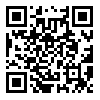目的 探讨中医外治法在丘脑卒中后肩痛患者康复治疗中的效果。方法 选取100例丘脑卒中后肩痛患者作为研究对象,随机分为对照组与观察组,每组50例。对照组采用常规康复治疗方法进行治疗,观察组在常规康复治疗基础上采用中医外治法进行治疗,两组均治疗30 d。比较两组患者治疗前及治疗后7 d、15 d、30 d的肩关节疼痛视觉模拟量表(VAS)评分、肩关节(屈曲、外展、外旋)活动度,以及治疗后30 d的临床疗效。结果 两组患者的肩关节疼痛VAS评分、肩关节屈曲活动度及外旋活动度差异有统计学意义(P<0.05);两组患者的肩关节疼痛VAS评分有随时间延长而降低的趋势,肩关节屈曲活动度、外展活动度及外旋活动度有随时间延长而增大的趋势(P<0.05);上述指标的分组与时间存在交互效应(P<0.05)。治疗后7 d、15 d、30 d,观察组的肩关节疼痛VAS评分低于对照组,肩关节屈曲活动度及外旋活动度大于对照组;治疗后15 d、30 d,观察组的肩关节外展活动度大于对照组(P<0.05)。观察组的总有效率高于对照组(P<0.05)。结论 在常规康复治疗基础上采用中医外治法治疗丘脑卒中后肩痛患者疗效显著,能够有效改善患者肩关节疼痛症状并促进肩关节功能恢复。
广西医学 页码:836-840
作者机构:李昌柳,在职硕士研究生,主任医师,研究方向为康复治疗学。
基金信息:广西科学研究与技术开发计划项目(桂科攻14124003⁃6);广西壮族自治区卫生厅中医药科技专项(GZPT13⁃44);广西壮族自治区中医药管理局自筹经费科研课题(GXZYA20240274)
- 中文简介
- 英文简介
- 参考文献
Objective To explore the effect of external therapy of Traditional Chinese Medicine in the rehabilitation of patients with shoulder pain after thalamic stroke. Methods One hundred patients with shoulder pain after thalamic stroke were selected as the research subjects, and they were randomly divided into control group or observation group, with 50 cases in each group. Patients in the control group were treated with routine rehabilitation methods, based on which the observation group received external therapy of Traditional Chinese Medicine for treatment. Patients in both groups were treated for 30 days. Visual analogue scale (VAS) score for shoulder joint pain, range of motion of shoulder joint (flexion, abduction, external rotation) were compared between the two groups before treatment, and 7, 15, and 30 days after treatment. The clinical efficacy was compared between patients of the two groups after 30 days of treatment. Results There were statistically significant differences in VAS score for shoulder joint pain, range of motion of shoulder joint flexion and external rotation between the two groups (P<0.05). The VAS score for shoulder joint pain in the two groups tended to decrease with time, and the range of motion of shoulder joint flexion, abduction and external rotation tended to increase with time (P<0.05). There was an interaction effect between grouping and time of the aforementioned indices (P<0.05). The VAS score for shoulder joint pain in the observation group was lower than that in the control group, while the range of motion of shoulder joint flexion and external rotation were larger than those in the control group 7, 15 and 30 days after treatment, and the range of motion of shoulder joint abduction was larger than that in the control group 15 and 30 days after treatment (P<0.05). The overall effective rate in the observation group was higher than that in the control group (P<0.05). Conclusion On the basis of routine rehabilitation therapy, Traditional Chinese Medicine external therapy is significantly effective in the treatment of patients with shoulder pain after thalamic stroke, which can effectively improve the symptoms of shoulder joint pain and promote the recovery of shoulder joint function.
-
无




 注册
注册 忘记密码
忘记密码 忘记用户名
忘记用户名 专家账号密码找回
专家账号密码找回 下载
下载 收藏
收藏
